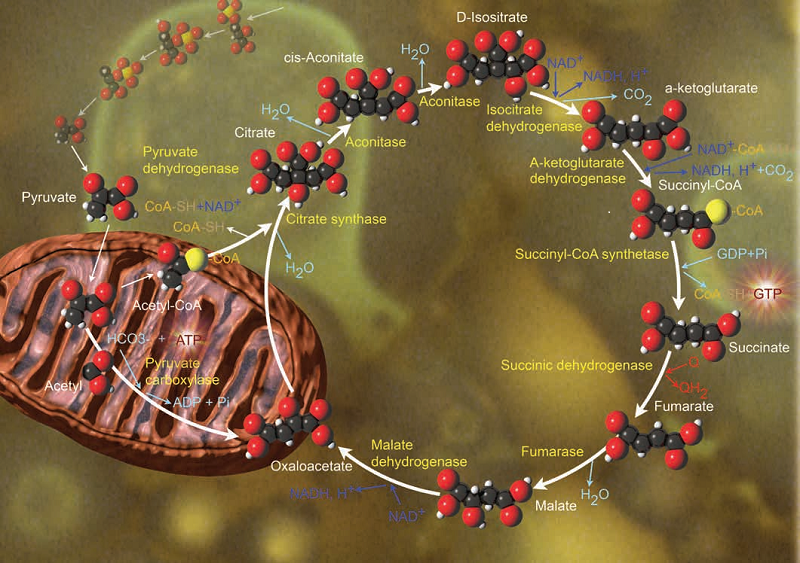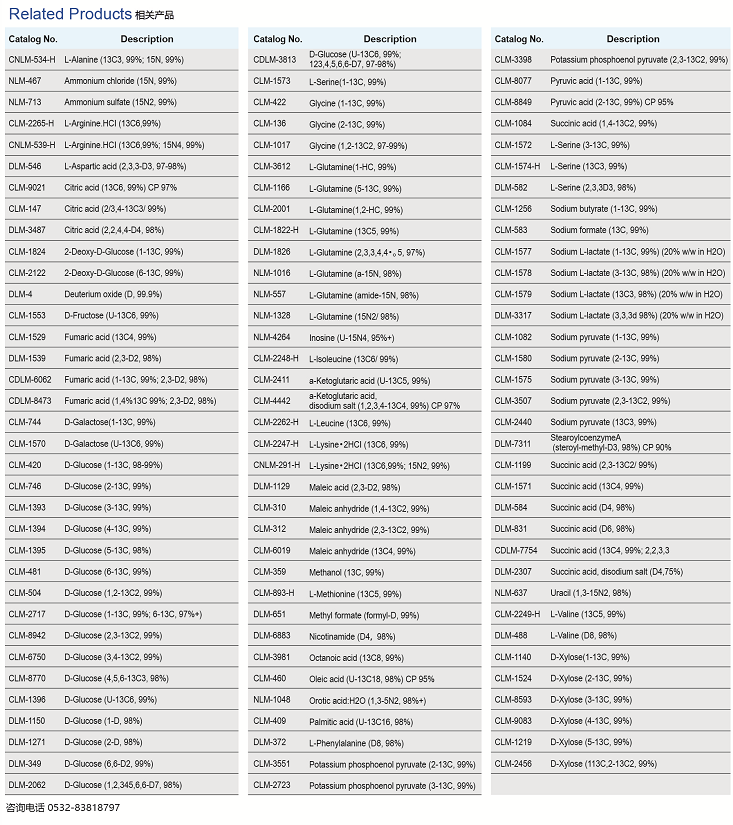青岛腾龙微波科技有限公司
您身边的实验室专家

更新时间:2021-02-22 09:31:41
Cellular Metabolism and Metabolomics
Joshua D. Rabinowitz, PhD
Department of Chemistry, Princeton University
Princeton, NJ 08544 USA
Isotope tracers are essential tools for monitoring metabolic pathway activity, i.e. fux. To quantitate fux in central carbon metabolism in cultured mammalian cells, D-Glucose (13C6, 99%) (CLM-1396) or L-Glutamine (13C5, 99%) (CLM-1822) is added to media lacking these principal nutrients. Cells are grown in the labeled media, and metabolite labeling is measured by GC/MS or LC/MS. Glucose has traditionally been considered to be the primary carbon source for many cell types, especially cancer cells. Recent studies show, however, the glutamine often plays a predominant role in feeding the tricarboxylic acid (TCA) cycle.The extent of contribution of glutamine to TCA cycle four-carbon units can be measured based on malate and asparate labeling, and to two-carbon units based on acetyl-CoA and fatty acid labeling. Citrate is a particularly informative molecule, because it refects both two- and four-carbon units of the TCA cycle. With modern instrumentation, it is possible to measure in parallel the isotope labeling of all of these species, and dozens more, enabling systems-level flux quantitation. These methods can translate also to the in vivo setting, with mice or patients infused with labeled nutrients prior to resection of a tumor or other tissue specimen.
The importance of metabolism in both bioengineering and disease pathophysiology is leading to wide application
of these methods across the biochemical sciences.


